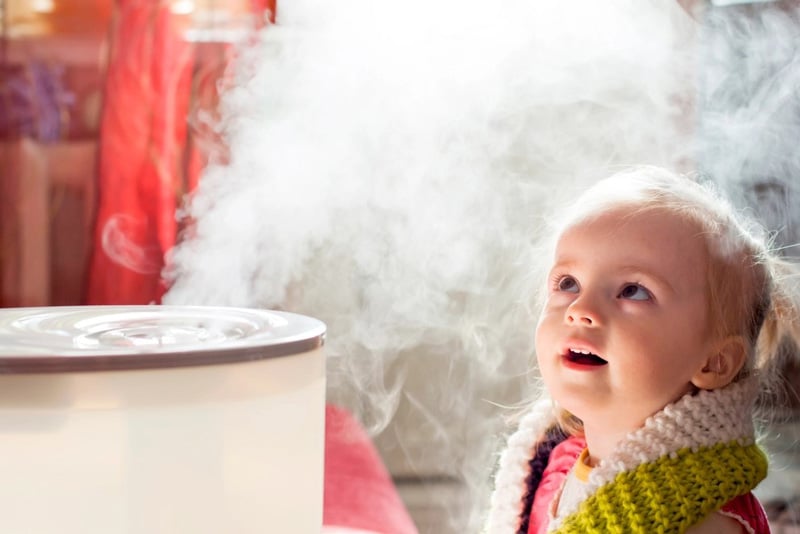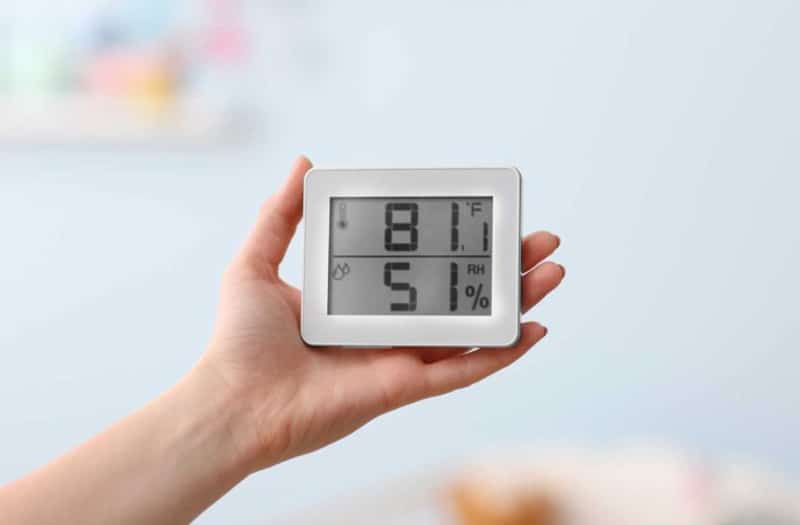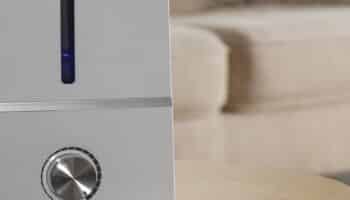A humidifier that keeps turning off is not useful nor is it really a humidifier. It’s pretty much useless if it’s not doing the job it’s supposed to.
So, why does it keep turning off? It’s getting power, after all. Enough, at least, to almost start up and offers a taste of hope it’ll do the job you paid for.
Then it turns off.
Again and again.
What hope there was fades as fast as the humidifier turning off.
If this is what you’re dealing with, especially at a time of year when you really would benefit from a functioning humidifier, you’ve come to the right place for possible answers to your problem. Along with those answers come some quick fixes you can try.
Now, let’s take a look at those reasons and fixes.
Why Use a Humidifier?
If you regularly use a humidifier, then you understand why you use it.
On the other hand, if you’re here to help someone who may be having issues with a humidifier, or if you received one as a gift, and you’re trying to understand the reason why someone would try to make their living environment more humid, below are some of the advantages provided by a humidifier:
- Help reduce allergens and respiratory triggers
- Reduce risks of airborne viruses
- Aid in the preservation of household structures, flooring, and furniture made of wood to prevent under and over saturation that can warp and damage
- Protect against dry throat, skin, and hair
Those are the big reasons but there are others. If you grew up somewhere hot and had an air conditioner but later moved somewhere hot and didn’t have an air conditioner, what would you want the moment it got really hot?
Exactly. Same goes for some people who aren’t use to living in dryer climates. Humidifiers help in a number of areas, including general comfort.
Hmm, maintain health and improve quality of life? All great reasons to get that humidifier back up and running.

Try These 5 Steps:
1. Refill Your Water Tank
Water, water nowhere.
The one thing a humidifier needs to function properly, besides electricity, is water. No water means no new humidity.
Humidifiers come with water tanks installed but not a constant source of water.
This means the tank will require manual filling and refilling. How often they need to be refilled depends on how much demand you put on the unit. Some people use a humidifier intermittently, depending on the weather. Others use them to help sleep and so run them all night.
The point is the water tank on a humidifier will not remain full in perpetuity. As is the nature of the design, water will be converted into mist to create the humid environment you’re looking for.
A portable humidifier used for a single room, for example, will shutoff automatically once it runs out of water. Some models will even have an indicator light that reads REFILL.
If your humidifier is turning off after turning it on, check the water tank and make sure you do have water. If you don’t, there’s your issue.
Some might think this is something that isn’t easily overlooked, and you’d probably be right if you’re using and refilling your humidifier’s water tank all the time.
Remember, though, that a lot of people who use humidifiers may have or need assistance with theirs. If they’re on their own when something like this happens, they may not think about checking the water level if they usually never have to.
Side note: if you’re dealing with a whole house humidifier, you shouldn’t have to worry about refilling any tank because those types of humidifiers are plumbed in and so have a constant supply of water. If they’re not getting water, you have a clog or some other plumbing situation to troubleshoot.
2. There’s More Water Around the Base than In the Tank
Maybe you did refill your humidifier’s tank, set it down, and then left for work. Maybe you then came home, moved the humidifier, turned it on, only to have it turn back off.
You then looked at the tank and noticed it’s empty.
But you refilled it before leaving for work.
Remember you moved it after coming home. If you go back and check where it originally was and find a large puddle of water, you’re right, you did refill the tank.
You also just discovered you have a leak.
Now maybe the above isn’t the exact scenario that you may go through. However, it doesn’t mean you don’t have a leak if you’re refilling the tank and then finding it empty after little to zero use.
Usually, leaks are easier to spot on hard wood or tiled floors. However, if you’re dealing with carpets it might be harder to notice the water if it’s in an area you don’t necessarily step through a lot.
If you have a leak, the cause might be a stuck plunger, debris around the plunger, or a cracked tank. It’s recommended to consult your manufacturer’s manual for troubleshooting a plunger or cracked tank issue.
3. You’ve Reached Your Humidity Level
If your humidifier keeps turning off and you have water in the tank and you’re not getting a REFILL indicator, check to see if you’re getting an indicator that means HUMIDITY REACHED or something along those lines. Refer to your manufacturer’s manual for your specific model for what it may indicate.
If your humidifier has reached the designated humidity level, it will turn off. It’s like a thermostat but measuring your local humidity instead of temperature.
To turn your humidifier back on, simply raise the humidity level higher. If you don’t, your humidifier’s mister will not operate until the local humidity level drops below the current setting on its own.

4. Reliable Power?
When it comes to problems involving any equipment that requires electricity to function as designed, you always need to investigate the source of the power. In this case, you’re going to check out not only the outlet you’re plugging the humidifier into but also the humidifier’s cord and other possible electrical issues.
Now before you point out the humidifier’s problem isn’t getting power, it’s staying on, you’re correct. But that doesn’t mean the humidifier’s getting enough continuous power to remain powered.
Electrical faults can cause electrical equipment to act glitchy. It’s also true that the more you have plugged into one outlet, the less efficient your equipment can become and thus more glitchy as well.
First, inspect the humidifier’s cord. If it’s frayed or damaged, you shouldn’t be using the humidifier. You should either replace the cord or have someone replace the cord for you.
Second, if the cord is okay, check the outlet. If you have other things plugged into the same outlet, unplug them and then plug your humidifier back in. If it’s working properly now, you know you had an overloaded outlet and enough juice wasn’t getting to the humidifier.
Third, if you’re plugging a humidifier into a power strip, stop. Power strips are useful but for smaller items, not appliances that routinely start and stop and can draw excessive amounts of energy to operate. It’s better to plug things like humidifiers directly into a dedicated outlet.
If you’re concerned about a power surge, you can get single outlet surge protectors to protect your humidifier instead of relying on a power strip variety surge protector.
5. When to Call for Help
In the event that none of the recommendations above work as easy fixes and you’re still having issues with your humidifier turning off, it’s time to call a technician or take it to a service center. At this point, you may be dealing with more complex or several issues that need to be addressed.
Most of the time, the easy answer is the easy fix, but the older appliances get, the more likely they are to not need one fix but several repairs.
If you have a whole house humidifier, you hopefully already have someone who inspects and services your unit on an annual basis. Because they’re usually tied into the HVAC system, they’re usually done all at the same time.
Conclusion
A humidifier that turns on only to keep turning off is pretty annoying, especially if you rely on your humidifier for health issue. Whether those issues are related to respiratory problems or sleep patterns or plain old living comforts, you don’t need an equipment malfunction piled on top of them.
Or making them worse by not operating as expected.
The good news, however, is there are several reasons why your humidifier may be constantly turning off and those reasons usually have easy fixes. That doesn’t mean your humidifier will be easily fixed if it’s older or has more than one issue to correct. If that’s what you’re dealing with, you may need to consider repair or even replacement options







